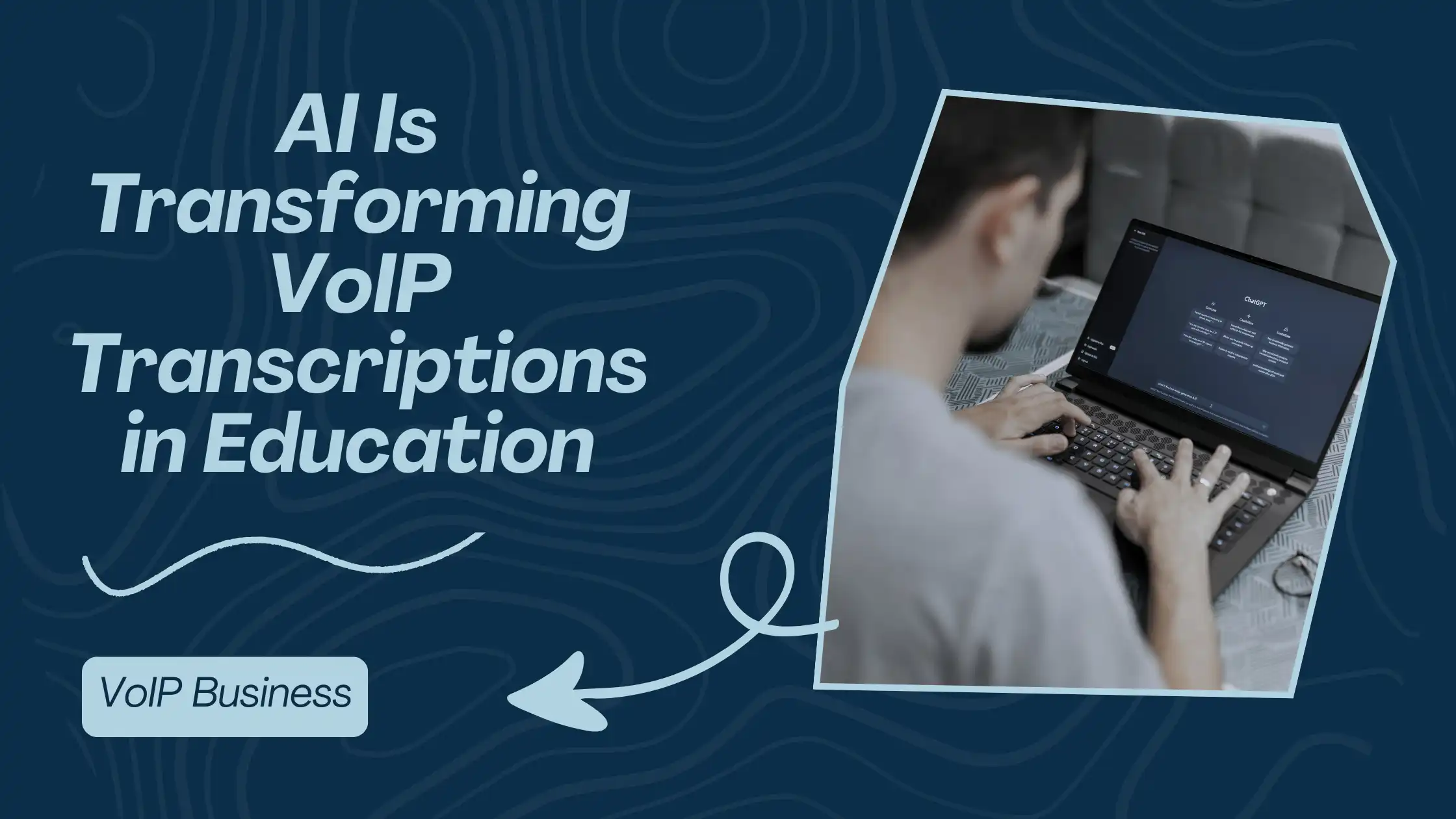These days, AI has started to make a big impact across many industries, and the field of education is no exception. One of the coolest ways it’s doing that is through something called VoIP transcription. AI helps to capture, analyze, and share spoken content in a faster and easier way. In this article, we will take a look at how AI improves VoIP transcriptions in education, and why it’s great for students, teachers, and everyone involved.
What’s VoIP and VoIP Transcription Anyway?
VoIP allows people to make voice calls over the internet instead of traditional phone lines. Just like an AHelp AI detector, it’s a game-changer in education, especially with the rise of online classes, virtual office hours, and remote collaboration. When you attend a virtual lecture or group discussion, you can record and transcribe a VoIP call to create a written record of what was said.
In the old days, someone had to listen to the recording and type out the conversation. It was slow and expensive, and not always that accurate. Today, AI makes the process way faster and more precise.
How AI Transforms VoIP Transcriptions in Education?
AI transcription tools use machine learning to convert spoken words into text. And, they’re getting really good at it. Here’s how AI is making a big impact:
1. Live Transcriptions That Help Students Keep Up
One of the best things AI brings to the table is live transcription. It means that students can see a written version of what the teacher says during an online lecture. This is helpful for students who have hearing impairments, struggle because English is their second language, or find it easier to follow along with written words. VoIP transcription also makes it simpler to take notes, highlight important points, or go back and review later.
2. More Accurate Than Ever
AI can understand different accents, speech patterns, and tricky subject-specific words. Moreover, it can tell the difference between words that sound the same (like “principle” and “principal”) because it understands the context. In such a way, AI doesn’t make as many mistakes as before, which is particularly useful in complex subjects like science or history.
3. It Takes Seconds to Search Through
Students won’t have to dig through long recordings or handwritten notes. When you need to find a part where your professor explained a specific term, type it in and jump right to it. It saves you lots of time and makes the whole process way more effective.
4. It Helps to Break Down Language Barriers
This technology allows students from all over the world to learn in their preferred language. Many tools can automatically translate the transcript into multiple languages, so international students can keep up with the content if it’s not in their native language.
5. Learning Becomes Inclusive
AI tools support students with disabilities. Real-time captions help those with hearing impairments, while text-to-speech technology can read content out loud for students with visual impairments or other learning difficulties. However, students without disabilities can benefit as well because a transcript in front of their eyes can reinforce what was said in class and help with note-taking.
6. Smarter Study Tools After Class
AI doesn’t stop at transcribing. After class, AI tools can analyze what was said and help both teachers and students in the following ways:
- Highlight main points
- Spot repeated questions or tricky concepts
- Create summaries or study guides
The main advantage is that you can have a built-in tutor or a teaching assistant who helps you understand the material better.
7. It Helps to Keep It All Together and Not Sweat
Another great perk is how AI-powered transcriptions help students stay more organized. No more scrambling to take perfect notes or worrying about missing something important. You can have it all written down automatically for you. Students can go back, re-read the part they didn’t quite catch, and focus more on understanding the material. When you need to study for exams or have a tough assignment to deal with, a searchable transcript in front of your eyes can save you valuable time. It’s a simple tool that makes a big difference in how students manage their learning challenges.
A Few Things to Watch Out For
Of course, no technology is perfect. AI still has some challenges to work through. Privacy is a big concern because these tools process a lot of sensitive information. Therefore, schools need to make sure that student data is protected. Then, there’s bias. If an AI model wasn’t trained on a wide variety of accents, voices, and languages, it might not perform equally well for everyone. Developers keep working on this, but it’s something to be aware of.
What’s Next?
Here’s what we can expect from VoIP transcription tools in the near future:
- Better support for more languages and accents
- Improvements in the accurate transcription of complex academic terms
- Tools that connect with your learning platforms to automatically create summaries or study materials based on what was said in class
The future of learning will be more personalized and accessible.
Final Thoughts
AI has changed the way we use VoIP transcriptions in education and made them more accurate and inclusive. AI can help students and teachers get the most out of online learning. Effortless integration makes these tools very appealing because they are easy to use and cover a lot of ground. While there are some challenges to work out, the benefits so far are hard to ignore.
Read More : History of VoIP and Internet Telephony: From The 1920s To Present Day



